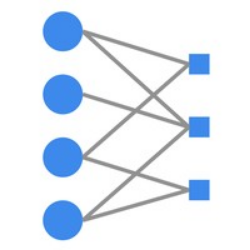Probabilistic graphical modeling (PGM) provides a framework for formulating an interpretable generative process of data and expressing uncertainty about unknowns, but it lacks flexibility. Deep learning (DL) is an alternative framework for learning from data that has achieved great empirical success in recent years. DL offers great flexibility, but it lacks the interpretability and calibration of PGM. This thesis develops deep probabilistic graphical modeling (DPGM.) DPGM consists in leveraging DL to make PGM more flexible. DPGM brings about new methods for learning from data that exhibit the advantages of both PGM and DL. We use DL within PGM to build flexible models endowed with an interpretable latent structure. One model class we develop extends exponential family PCA using neural networks to improve predictive performance while enforcing the interpretability of the latent factors. Another model class we introduce enables accounting for long-term dependencies when modeling sequential data, which is a challenge when using purely DL or PGM approaches. Finally, DPGM successfully solves several outstanding problems of probabilistic topic models, a widely used family of models in PGM. DPGM also brings about new algorithms for learning with complex data. We develop reweighted expectation maximization, an algorithm that unifies several existing maximum likelihood-based algorithms for learning models parameterized by neural networks. This unifying view is made possible using expectation maximization, a canonical inference algorithm in PGM. We also develop entropy-regularized adversarial learning, a learning paradigm that deviates from the traditional maximum likelihood approach used in PGM. From the DL perspective, entropy-regularized adversarial learning provides a solution to the long-standing mode collapse problem of generative adversarial networks, a widely used DL approach.
翻译:预测性图形模型(PGM)提供了一个框架,用于制定可解释的数据变现过程,并表达对未知数的不确定性,但缺乏灵活性。深层次学习(DL)是一个从近年来取得了巨大经验成功的数据中学习的替代框架。DL提供了极大的灵活性,但缺乏PGM的可解释性和校准。这个模型发展了深度的概率性图形模型(DPGM)。DPGM利用DL使PGM更加灵活。DPGM带来了从显示PGM和DL优势的数据中学习的新方法。我们在PGM内部使用DL来建立具有可解释性潜伏结构的灵活模型。一个模型利用神经网络来扩展指数型家庭变数,以提高预测性业绩,同时加强潜在因素的可解释性。另一个模型在模拟DGM数据时可以计算长期的可靠性问题,这是使用纯DL或PGM方法的挑战。最后,DPGM成功地解决了一些尚未解决的变现主题模型问题,在PGM内部广泛使用的模型中也利用了一种可解释性模型的变现的变现变现性模型。





